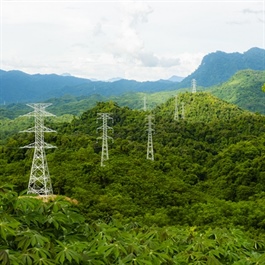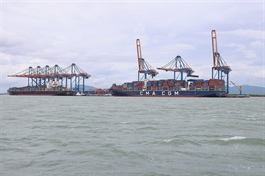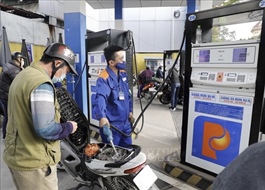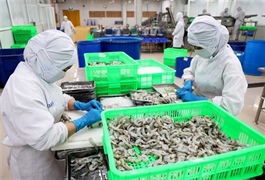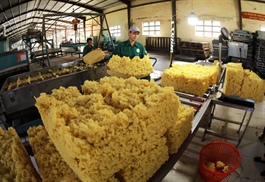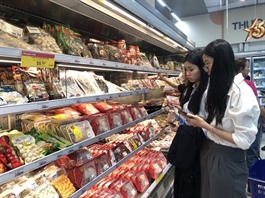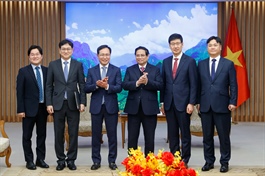Clean industry seeks supply chain gains
Clean industry seeks supply chain gains
High economic growth coupled with a rise in consumption are facilitating the domestic cleanroom and air conditioning market.
At an event on clean industry in Hanoi one month ago, Cao Dai Thang, CEO of Intech Group, stated that cleanroom and air conditioning tech is not only the foundation for semiconductor manufacturing and high technology, but also helps businesses to participate more deeply in the global supply chain.
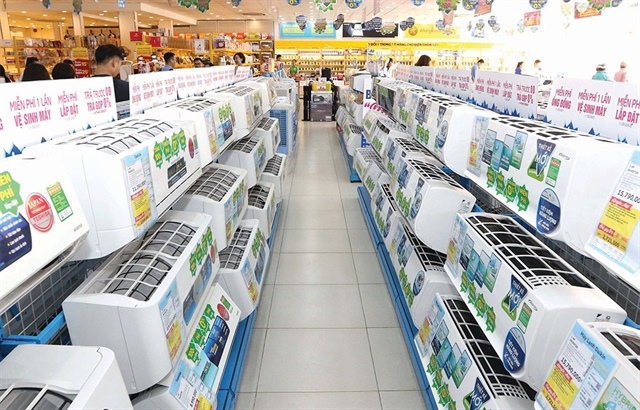
Vietnam’s air conditioning and cold storage segments have witnessed major advances in recent times, photo Le Toan |
“The increasing activity by foreign-invested enterprises and large domestic groups in the manufacturing of electronic components and pharma production, as well as the government’s focus on the semiconductor industry, has led to a significant increase in the demand for cleanrooms in the coming years,” Thang said.
“Previously, the majority of Vietnam’s cleanroom equipment market was supplied by foreign companies. Vietnamese enterprises were mainly installation contractors, with some providing design solutions and consulting,” Thang added. “However, in recent years, there has been an emergence of domestic companies offering comprehensive cleanroom solutions and equipment.”
Intech Group has been investing in research and development (R&D) of cleanrooms in Vietnam, with nearly 15 years of experience. By the end of 2022, the company had successfully researched and manufactured a cleanroom reaching the highest level in the world according to the NEBB standard of the United States.
In recent years, Vietnam’s cold storage and air conditioning industry has made significant strides. In January, Panasonic handed over its HVAC Solutions Laboratory to Ho Chi Minh City University of Technology, under the Vietnam National University.
The laboratory is equipped with Panasonic’s professional air solutions, including air conditioning systems, ventilation solutions, air purification technology, and a comprehensive air quality management system, promising to deliver substantial practical value in training and education.
“This marks a significant step in supporting in-depth training and research on comprehensive air solutions, enhancing the quality of technical human resources in the refrigeration and air conditioning field, and fostering sustainable development in Vietnam,” said Nguyen Ly Tuong, senior manager of the Project Business Department at Panasonic Air-Conditioning Vietnam.
Elsewhere, Samsung announced a $1.8 billion investment in its Samsung Display factory in the northern province of Bac Ninh in September 2024, expanding production beyond OLED screens for smartphones to include OLED displays for IT equipment and automobiles.
In November, South Korean conglomerate LG also announced an additional $1 billion investment in Vietnam, raising its total to $5.65 billion.
According to Mordor Intelligence, the cleanroom technology market is estimated to have reached $9.37 billion in 2024 and is projected to hit $13.21 billion by 2029, with a compound annual growth rate of 7.11 per cent during the rest of this decade. In particular, the Asia-Pacific market is evaluated to have the fastest growth rate.
Assoc. Prof. Nguyen Viet Dung, vice chairman of the Vietnam Society of Refrigeration and Air Conditioning Engineers, stated that cleanroom tech is a complex field, integrating many advanced technologies such as precise air conditioning, nano-level dust filtration and disinfection, precision mechanics, and automation. Therefore, investing in this field requires caution and long-term vision.
“The investment in R&D in this field in Vietnam is still very low compared to the rest of the world,” Dung said. “If domestic enterprises invest substantially, focusing on developing products that meet high technical standards, then expanding into the international market, initially in the South Asia and Southeast Asia regions as some refrigeration equipment manufacturers have done, is entirely feasible.”
However, according to Dung, the downside of cleanroom technology is the high electricity consumption and significant greenhouse gas emissions.
This is also one of the main factors leading to the nearly doubling of electricity consumption in the refrigeration and air conditioning sector since 2016, accounting for about 30 per cent of the world’s total commercial electricity output.
Vietnam’s industrial development strategy until 2025, vision towards 2035, sets the goal of achieving an average added value growth rate of 7-7.5 per cent per year in the period 2020-2025, and continuing to reach 7.5-8 per cent per year in the 2026-2035 period, contributing to making Vietnam an important link in the global supply chain.
According to a market report conducted by Blue Weave Consulting, the Vietnam air conditioning market is projected to grow at a rate of 4.13 per cent during the 2024-2029 period.



